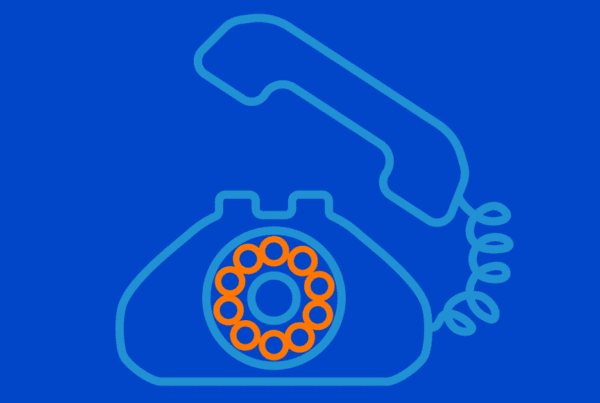
Our deep history with dogs evolved from two basic needs: food and work.
As wolves learned humans were a good food source, humans realized these canines can help them as well and the partnership evolved over thousands of years. Just think of exceptionally true tales like Balto, the dog who delivered life-saving medicine to Nome, Alaska; or Owney, the U.S. Postal Service mascot whose taxidermied body has been part of the Smithsonian Museum since 1911.
Fast forward to 2020 and while we’re still utilizing dogs for work in many ways. Service dogs assist many people with everyday activities, and herding dogs are found on farms across the globe. However, something has shifted in the past few years, and “working with dogs” is looking much different from its ancestral roots.
Dog-friendly workplaces have changed how we work with dogs and these pet-friendly offices are now commonplace and considered an employment perk to many. In fact, studies have shown that having dogs in the workplace benefits employees and the number of companies that offer this perk is growing.
The point is, as our needs have evolved over time, dogs, humans, and work have been intertwined for thousands of years. Even though this working relationship has evolved, both humans and dogs see mutual benefit from working side by side, no matter the format.
Our history working with dogs runs deep.
This centuries-long partnership came from the domestication of wolves, thought to be anywhere from 18,000-32,200 years ago. Over this time, wolves were bred into the dogs we know today, and our lives became interwoven, with humans depending on dogs for their working abilities and dogs depending on humans for food and shelter.
According to E.S. Forster’s 1941 book, Dogs in Ancient Warfare, dogs accompanied the horsemen of Magnesians and also had multiple roles during times of conflict. The dogs were utilized as guards, messengers, for patrol, and in combat, rushing toward attackers to cause confusion. Modern times are no different. Currently, there are around 2500 active United States military dogs, with roughly 700 of those dogs overseas. These dogs are valuable, too. A fully trained bomb-detection dog can cost the military up to $150,000.
War isn’t the only thing mankind needs help with, however. More than 80 million people with disabilities rely on service and emotional support dogs to assist with daily tasks, remind their person to take medication, monitor health, and provide comfort. These dogs need to be acutely aware of their human companion and many service dogs are the difference between life and death. Medical alert dogs are a great example of a service dog’s dedication to keeping us safe. These dogs are trained to detect warning signs of an epileptic seizure, as well as blood-sugar drops in their humans. For a medical-alert dog, people are willing to pay up to $50,000.
Bring Your Dog to Work Day changes the game.
Over the past couple of decades, we’ve flipped the script with dogs and work. In 1999, the first Take Your Dog to Work Day was celebrated and around 300 businesses participated. Always celebrated the Friday after Father’s Day, the “holiday” added a little excitement to the office once a year.
As Take Your Dog to Work Day gained steam over the years, offices started to see an evolution: more and more were becoming dog friendly. Currently, 65 percent of candidates ask potential employers about their pet policies and 53 percent of employees in non-pet-friendly offices would be more likely to stick around if the office became pet friendly. As bringing dogs into work started trending up, people noticed the benefits of having a fluffy buddy around the office. Studies have shown that offices where dogs are allowed improve employee office morale, helps with absenteeism, reduces stress and improves productivity. Yep, just one dog in the office can do that.
Having a dog around can help break up the workday in a positive way. A 15-minute potty run is a great brain-refresher and nobody can ignore a dog that is desperate for some pets. These tiny workplace tweaks can help in a big way, as dogs help keep you present, taking your mind off stressors for a few minutes.
Co-working spaces encourage dogs at work.
Twenty-three years later and dogs are now a regular part of the workday and people now have the option to choose offices that are fido-friendly. With the gig economy growing at an accelerated rate, people are utilizing co-working spaces for their personal work needs. These spaces are convenient to freelancers and entrepreneurs because they offer conference rooms for clients, a kitchen for members and everything else you would find in a typical office space. This flexibility also includes dogs, as people can choose a workspace based on whether or not they want dogs around. Many spaces offer locations that allow dogs or prohibit dogs, depending on a person’s working preference.
The special benefit of coworking with dogs is that by just having dogs around, people are more likely to connect and get to know one another. Dogs are a great icebreaker, and by getting to know the dogs, you’re also getting to know the members, making networking much easier. In terms of co-working businesses, WeWork has been a pioneer when it comes to working with dogs, with many members choosing the coworking space specifically for its dogs-at-work benefits. There have also been anecdotal accounts of how WeWork members have increased leads as a result of the pet-friendly environment.
Zoom bombs make dogs a constant work presence.
Anyone who has had to make the work-from-home switch due to COVID-19 has likely seen a lovely pet parade across their colleagues’ screens – or had their own pet pop up unexpectedly. Welcome to the new era of dogs at work.
With work and life now combined, unexpected Zoom crashers are commonplace. At first it was a little embarrassing for us all, but we soon learned our colleagues actually love when pets crash a meeting.
One shelter has taken advantage of the increased number of pets on video conferencing and is offering animals to join Zoom meetings. Richmond Animal Care & Control (RACC) launched a program where you can invite shelter animals to your meetings as a way to lend a smile during the workday. People can choose if they want a high-energy, playful animal in the meeting or a more chill participant.
Pets have become such a fixture on Zoom calls that actor Rainn Wilson (The Office) hosted the first-ever Zoom call for pets this past April. The idea was a hit, with 900 pets joining the call. The virtual event helped raise awareness and money for 20 shelters nationwide.
With the way things are trending, it’s only a matter of time before dogs run the entire workforce.
Lindsay Patton is a self-employed writer and social media strategist. A leader for most of her career, Lindsay has managed more than 250 direct employees and loves mentoring young talent to help grow their skills. She spent seven years as a reporter and editor and is still an active writer and journalist. In 2016, Lindsay started taking social media seriously and the skill quickly became one of her specialties. Within the past two years, Lindsay has been invited to speak on social media and leadership in the workplace by Ernst & Young, Social Media Day PHL, The W.E.L.L. Summit, and more. She has found happiness in the self-employed life because it allows her the flexibility to spend quality time with her husband and their two goofball dogs.




